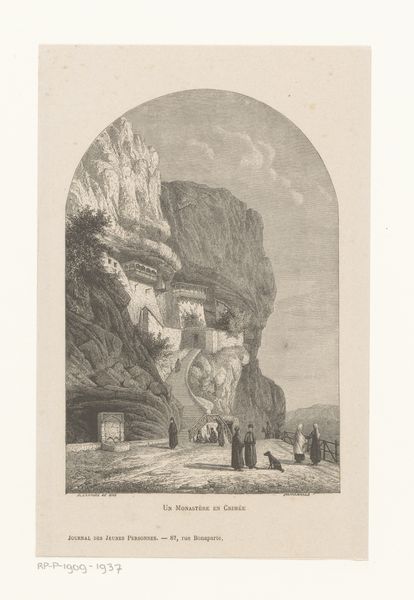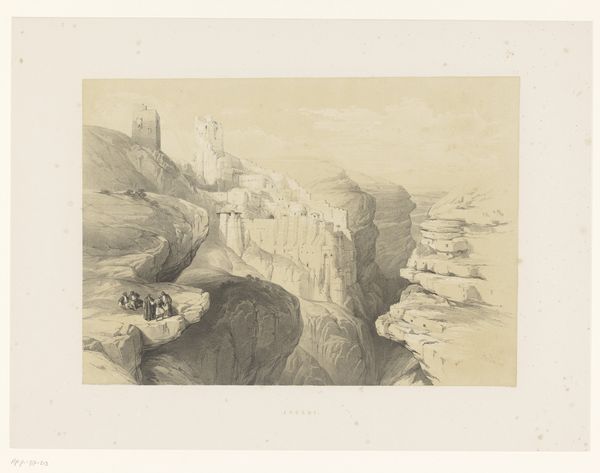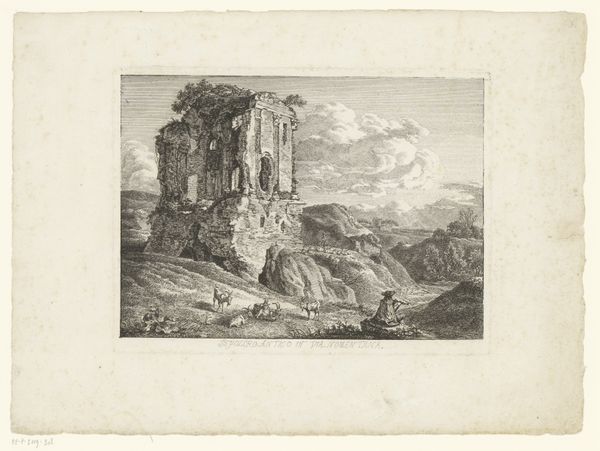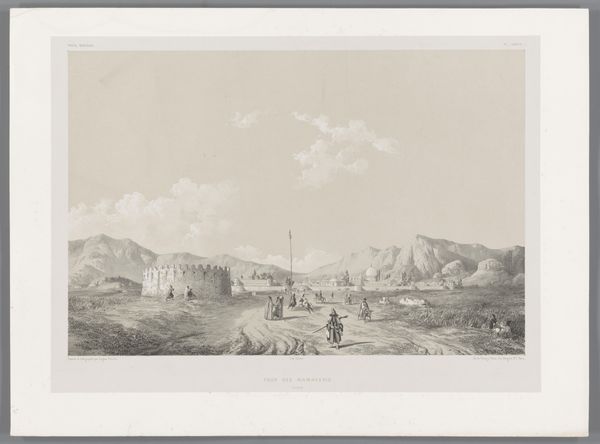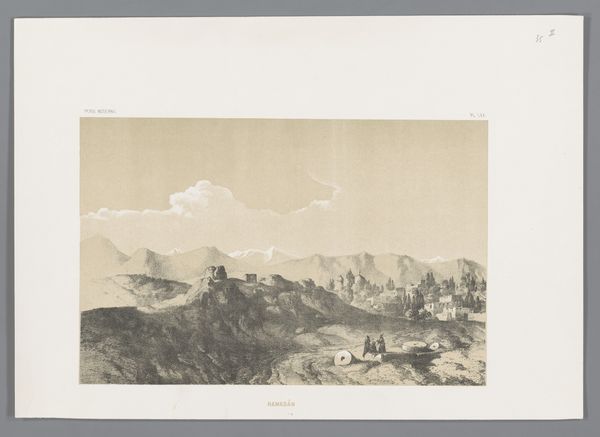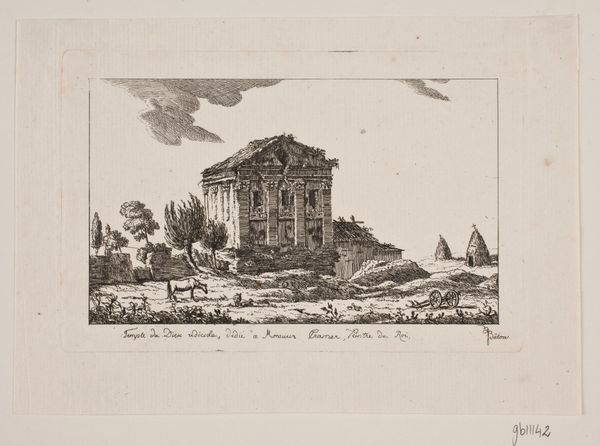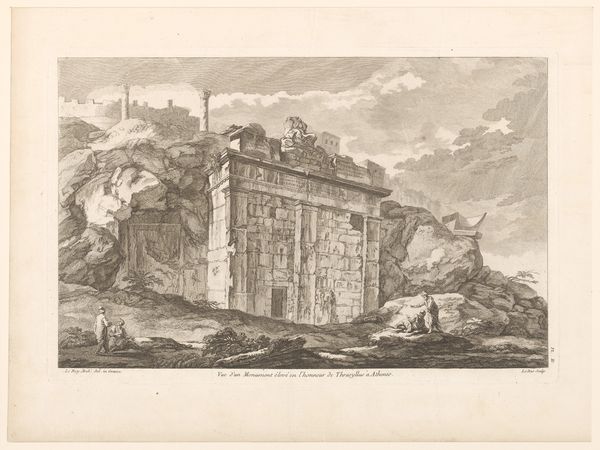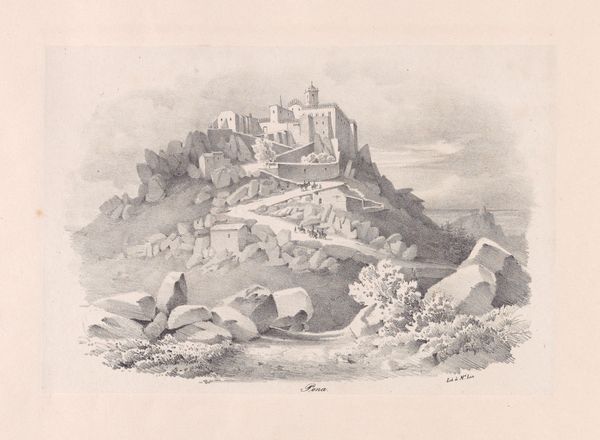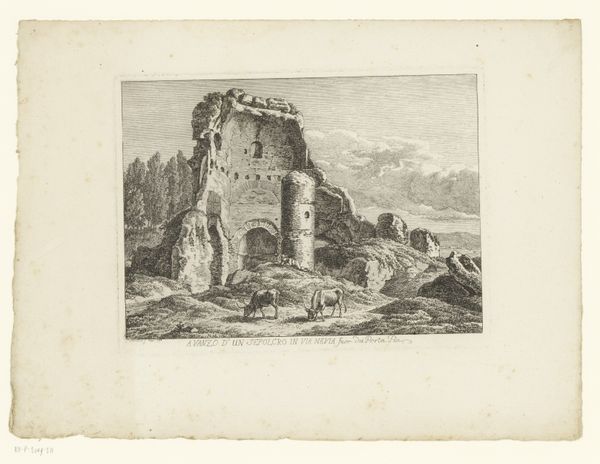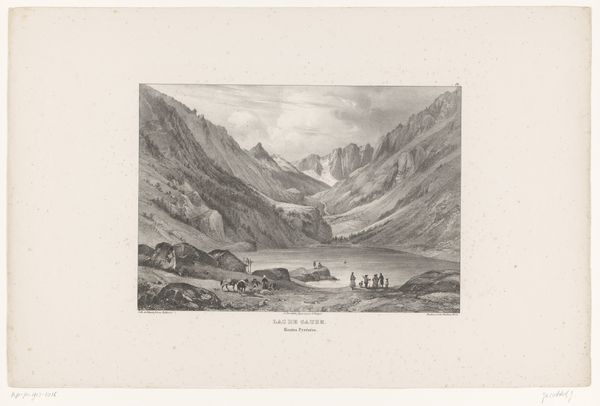
Dimensions: height 393 mm, width 530 mm
Copyright: Rijks Museum: Open Domain
Editor: Here we have François Stroobant's "View of Ad Deir in Petra," an engraving from 1852, currently at the Rijksmuseum. It’s such a beautifully rendered scene; the monumentality of the architecture contrasting with the figures. What stands out to you in this print? Curator: The scale is so striking, isn't it? Consider Ad Deir itself—literally, “the Monastery”—a testament to cultural palimpsests, reused and reinterpreted. The image carries with it echoes of multiple spiritual traditions, a blend of Nabataean craftsmanship adopted by Christianity. How do the people within the landscape inform your understanding? Editor: I notice that the figures are relatively small compared to the architecture. Is it meant to suggest the enduring legacy of the building? Curator: Precisely. The image almost hints at the sublime. A tiny group ventures to climb. Does this image portray the grand architecture, the resilience of ancient culture, or the transience of human existence? Perhaps all three intertwined? Editor: I guess I never really thought about engravings expressing philosophical ideas like that before. Curator: The very act of rendering this scene in 1852 speaks to a rising fascination with the ancient world, fueled by Romantic ideals. Doesn't this resonate with our modern longing for authenticity in a rapidly changing world? How does its representation change across history? Editor: That makes me look at it differently. It’s not just an image of an ancient building but also about the journey of culture across time. Curator: Exactly! Every viewing becomes a fresh engagement with a cultural narrative still unfolding. A testament to the power of symbols through history. Editor: Thank you! This piece is a great reminder that even a simple engraving holds a wealth of stories.
Comments
No comments
Be the first to comment and join the conversation on the ultimate creative platform.
